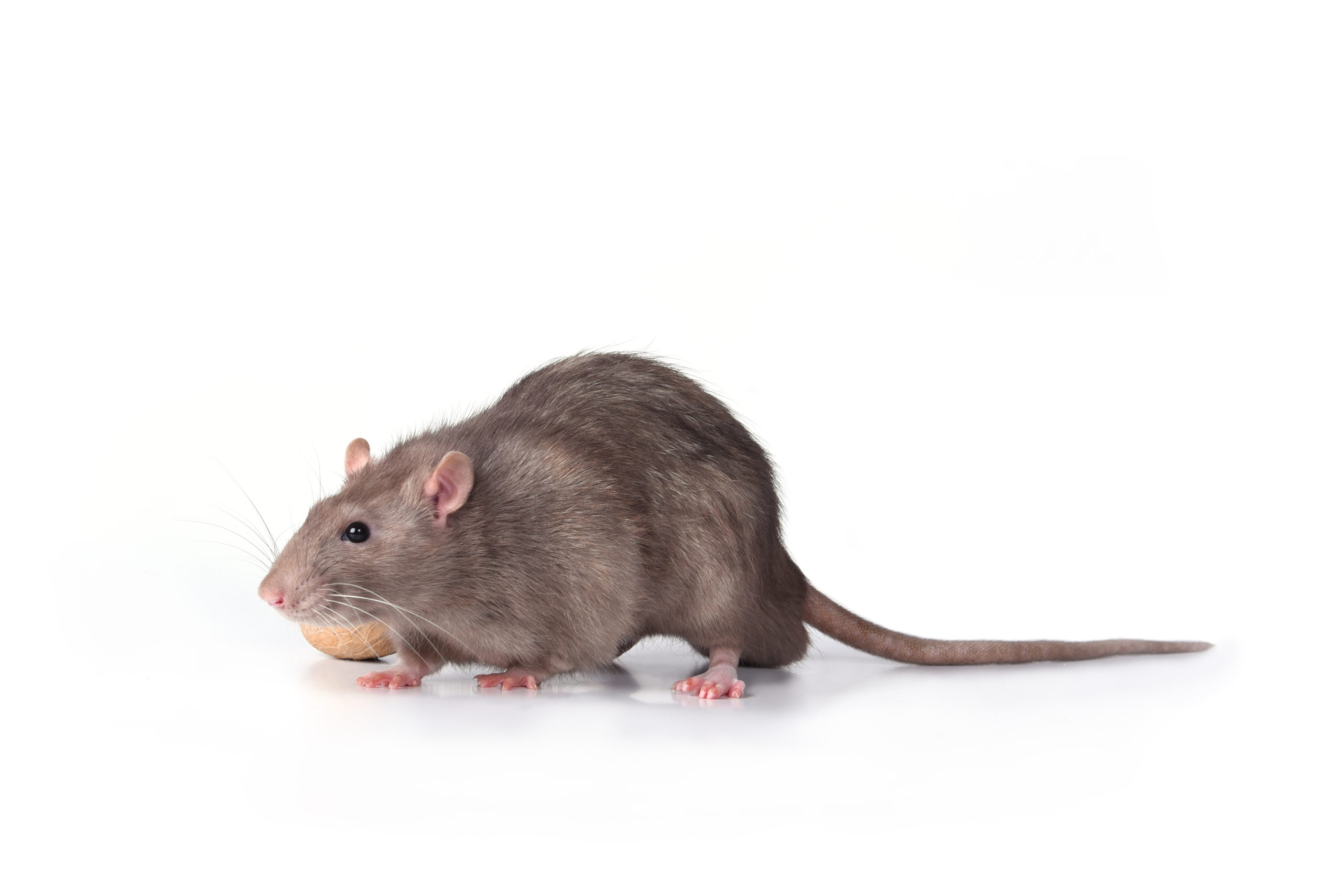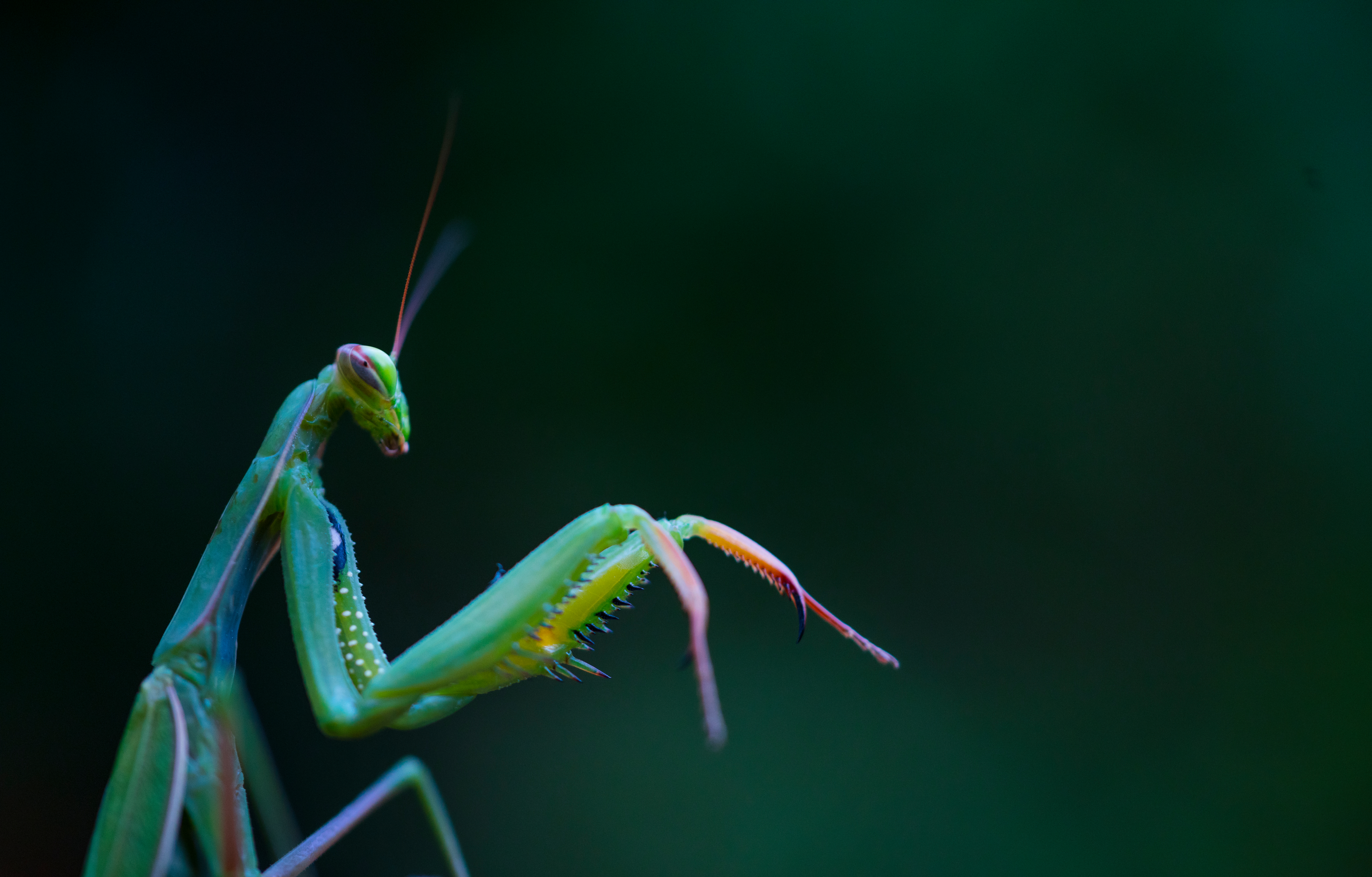How Accurate are the Animated Star Wars Pests?
How Accurate are the Animated Star Wars Pests?
Out of the countless alien and insectoid species in the Star Wars universe, there are some striking similarities between fact and fiction. Some of the comparable creatures are sentient beings that can speak in a certain language, while others act like the non-speaking animals that we know in our world. Fun fact: this is not the first time we have analyzed insects and pests from the fictional galaxy! You can read our previous post about Star Wars insects here, as well as a comparison of their terrifying space spiders to our real creepy-crawlies here. Today’s edition is a random mixture of some famous pest-like aliens from the beloved animated series Star Wars: The Clone Wars, as well as one famous beast from the prequel movie Attack of the Clones. The Force may be needed for guidance in order to think about our real terrifying pests along with these galactic ones!
Admiral Trench (Harch species)

Wolf Spider
Any viewers with arachnophobia likely shuddered at the sight of a recurring character in The Clone Wars. Admiral Trench is a humanoid spider-like creature that appears in a few episodes of the series, the later ones featuring his new cybernetics after Anakin destroyed his ship. He looks very similar to some of our larger, fuzzier spiders, which is impressive yet creepy. Trench has 8 appendages (2 of which function as normal legs), 6 eyes, chelicerae, fangs, and dark fur. He speaks English and talks using his small fanged mouth, and his deep voice just adds to the intimidation factor. He is reportedly one of the largest of his species, the Harch, which hail from the planet Secundius Ando. Trench’s two main episodes showcase his strategic prowess and ruthless desire to end the Republic. His first appearance was in the prequel episode “Cat and Mouse,” where Anakin and Obi-Wan were tasked with delivering supplies to the relief effort on Christophsis while simultaneously protecting them from Trench’s onslaught of warships. Anakin won the battle by strategically using Trench’s tracking torpedoes against his own ship, but not without Trench first anticipating every move and attack up to that point. It is only fitting, then, that Anakin was the one to end Trench in “Unfinished Business” after Trench used a captured clone trooper to make an algorithm for ending the Republic once and for all. Thankfully, the spider was squished before enacting his final plan.
We recommend watching these two episodes if you want to see Trench in action, but let’s focus on his traits for a second. His first appearance was a surprise to many characters because he was believed to be gone after a previous battle. This, coupled with him somehow surviving Anakin’s attack, shows just how tough and resistant Trench is to many things. He also makes a noticeable clicking noise with his mouth in some sentences. This is visually shown by his fangs moving with each click as he ponders his next orders for the battle droids. Trench is such an expert battle strategist that he was able to anticipate almost every attack and retaliation before they happened. It is worth wondering if every Harch is naturally the best strategist ever, or if Trench was one of a kind. Hopefully, the latter is true.
Relation to Earth’s Pests
As far as we know, there aren’t any real spiders that are decorated admirals from intense battles. But the normal arachnids that we see are scary enough based on their looks alone. Trench looks most comparable to a wolf spider for a few reasons. One is the creepy eye pattern, which sends chills up the spine of anyone who makes accidental eye contact with the spider. Trench has two large eyes under four smaller ones, while wolf spiders have two large eyes in between two rows of three smaller eyes each. We’re glad that the eyes of wolf spiders don’t glow red like Trench’s! Another similarity is that both Trench and wolf spiders are covered in dark hair, which can vary from dark brown to black depending on the environment. The third similarity is how both are experts in hunting and strategizing. Wolf spiders don’t stay confined to a web, as they prefer to go out and hunt their prey. They may not be hunting Republic ships like Trench, but the idea is still there. Trench falling on his back after Anakin ends him is also realistic, as many spiders die that way. This is because they have no strength or nutrients to right themselves, especially if insecticides are involved. But the major difference between Trench and real spiders is the clicking sounds, or lack thereof. Most spiders use vibrations in favor of audible sounds, with the exception of hissing or purring during mating season.
Nexu

Rat
This one was actually featured in a live-action movie before an animated show. If you have seen Attack of the Clones, you may remember the later scene where Anakin, Obi-Wan, and Padmé are battling three beasts in the Geonosian arena. Padmé’s designated beast was the nexu, a sharp-toothed, angry creature that acted like a giant panther or mountain lion. This agile beast clawed Padmé, which looked quite painful, but she got the upper hand by swinging from her execution post to kick the nexu down where Anakin used his bull-like beast to kill it. The nexu was later featured in an episode of the animated spin-off The Bad Batch, where it hunted young Omega on the farm they visited. Luckily, it was scared off before anything bad could happen. But in both showings of this creature, one thing is for sure: it is a skilled hunter that is not easily caught.
While the nexu acts more feline-like, the pest part of it is one of its most noticeable features, besides the razor-sharp teeth. Its long tail looks very similar to that of a rat, with its lack of fur and scaly appearance. This tail intentionally trailed behind the nexu as it hunted for its next meal, and seemed to serve a similar purpose to a rat’s tail. As for its four eyes with partial infrared vision, long quills, and sharp claws, those are combinations of many other creatures we would prefer not to meet while on a hike. Vampire bats, porcupines, and grizzly bears definitely know how to use these features to their advantage, and we can only assume that the nexu did the same.
Relation to Earth’s Pests
The nexu is a combination of the scariest traits in various factual species, none of which we want to encounter in an arena or anywhere else. But one of the less-terrifying features is its tail. The nexu doesn’t seem to use it for any specific purpose in either of its appearances, but the rat is the same way. This is because the tail is primarily used for balance in both animals. Rats use their tails to balance on narrow surfaces that they walk on, like fence lines and beams, as well as hold onto something when they need to climb. It is also an extension of their vertebral column, which is why it is important to the rat’s anatomy. A rat can survive without its tail, but its balance will be off for the rest of its life. On another note, the nexu’s infrared vision is actually similar to a few different pests. Mosquitoes and bed bugs use this ability to hunt for mammals to bite, since warm blood is easily detected by them. A higher temperature means additional infrared energy. We can only assume that the nexu is such a good hunter because of its excellent vision and infrared detection, which is just another reason we are thankful this creature is purely fictional.
Milodon

Centipede
The milodon may be the least familiar creature here, as they were not a central feature on any episodes. But they are also some of the most clear references to our own pests in that galaxy, so we had to include them. Milodon were most notably featured in the twentieth episode of season 4, called “Bounty.” This episode focused on some secondary characters, like Boba Fett and Asajj Ventress, completing a job on the milodons’ home planet of Quarzite. There are a couple of shots where you can see them crawling along the ground of the dark planet, as they basically just look like giant centipedes. This is why they were used by the Kage species as mounts, as it would be much faster to ride a multi-legged beast than to walk on foot. Milodon have 24 legs, glowing eyes, and 4 mandibles with pincers, making them an imposing presence. They can be any color from purple to green to brown, which matches the star-studded planet they come from.
Relation to Earth’s Pests
Milodon seem to be the tamest on this list by far, but that doesn’t mean that the real centipedes are a visual treat to have in the home. Centipedes also have many quick-moving legs that are visually off-putting, as they can range from 15 to 177 pairs. Like the milodon, centipedes prefer darker areas to live and hunt in. They also like to be near moisture, which is why they are commonly found in bathrooms and near kitchen sinks. Both centipedes and milodon eat smaller critters, which makes sense considering they both have pincers and mandibles. But unlike milodon, centipedes have awful eyesight. Some species don’t even have eyes! They use their antennae to search for their prey, which gives them a sporadic crawling pattern. While we do not want centipedes in our homes, they are technically beneficial due to their diet of smaller insects. We don’t know what it looks like when milodon hunt, but we can’t imagine it would be very fun to get in their way.
Gutkurrs

Praying Mantis
These nightmare creatures were one of the earliest insectoids featured on The Clone Wars, as they premiered in the season one episode “Innocents of Ryloth.” Obi-Wan and his clone squadron were sent to Ryloth to destroy a cannon and free the captured citizens, but the Separatists were prepared with a secret weapon – or rather, weapons. The lead strategy droid commanded the battle droids to release the captive, hungry gutkurrs to stop the Republic forces from saving the day. These pack hunters walked on two legs and had little T. Rex-like arms, but their sharp claws and angry attitudes made up for their strange appearance. They also had thick brown skin that was impervious to blaster fire. The Separatists purposefully kept them starved so the gutkurrs would be ready and willing to devour any heroic Republic soldiers. Luckily, Obi-Wan is a caring general and wise leader. He used the Force to slowly lead the entranced gutkurrs under a natural bridge, which he then ordered the clones to shoot and thereby trap the beasts behind a rock wall. We’re glad for Obi-Wan’s quick thinking, but the idea of hungry gutkurrs roaming the planet is a good reason to never visit Ryloth.
Relation to Earth’s Pests
While we don’t have a common pest that fits the intimidating description of the Gutkurr, there are a few that are comparable in their voracious appetite for other living beings. Mantids, ladybugs, and dragonflies are all fearsome hunters in the insect world. Ladybugs typically stick to the areas with plants to devour their favorite food of aphids. But mantids and dragonflies have hunting strategies that win them plenty of meals. Mantids stay still and blend in with their surroundings, then strike at nearby prey with their sharp arms. Dragonflies search for prey in the air, darting back and forth to grab their prey before biting. Gutkurrs seem to prefer to slowly stalk their prey and then pounce with their jaws wide open, but they still have to use some kind of strategy, similar to ground beetles. Appearance-wise, gutkurrs look similar to a few different kinds of insects. Weevils, drugstore beetles, and roaches all come to mind when looking at the gutkurr. Their tough exterior is similar to the roach’s, as both are protected from many common attacks that would end a normal insect. It’s rumored that roaches can survive a nuclear attack (they can’t), but at least we know that gutkurrs can be stopped by a sturdy wall of rocks.
Pest Control is the Superior Pest Battle Strategy!
While these creatures may be in a fictional distant galaxy, there are quite a few real pests that invite themselves into our homes and businesses. Insects, arachnids, and rodents all seek the same necessities out of life: food, water, and shelter. Unfortunately, this often means that they want to stick around when they find all three in our spaces. With the upcoming autumn weather, pests will want to invade our cozy homes more than ever. Our team of experienced technicians are prepared for all kinds of pest problems, and our EPA-approved treatments are tailored to solve each issue as thoroughly as possible. Contact us to learn more about our efficient services and how our team can keep your home free of any pests, whether they’re of the galactic or normal variety.
***Disclaimer: Section 107 of the United States Copyright Act recognizes “fair use” copywriter content as such: “Notwithstanding the provisions of sections 106 and 106A, the fair use of a copyrighted work, including such use by reproduction in copies or phono-records or by any other means specified by that section, for proposes such as criticism, comment, news reporting, teaching, scholarship, or research, is not an infringement of copyright.” This blog post may contain certain copyrighted works and characters that were not specifically authorized to be used by the copyrighted holder(s), however, the content on this post qualifies as “commentary” on the copyrighted works under the “fair use” doctrine of the U.S. Copyright Act and is thereby protected by federal law. Furthermore, we do not claim any ownership or creative rights of any characters on this list, and all rights outside of the fair use doctrine belong to the respective owner(s).
Citations
Admiral Trench. (n.d.). Star Wars Databank. Retrieved September 12, 2022, from https://www.starwars.com/databank/admiral-trench
Ballew, J. (2019, May 2). Natural enemies: Predators and parasitoids. Clemson Home & Garden Information Center. Available at https://hgic.clemson.edu/factsheet/natural-enemies-predators-and-parasitoids/ (Accessed on September 12, 2022).
Cowan, A.M. (2022, July 20). Infrared vision. National Geographic Resource Library. Available at https://education.nationalgeographic.org/resource/infrared-vision (Accessed on September 13, 2022).
Harch. (n.d.). Wookieepedia. Retrieved September 12, 2022, from https://starwars.fandom.com/wiki/Harch
Interesting facts about centipedes. (n.d.). Pest World. Retrieved September 12, 2022, from https://www.pestworld.org/news-hub/pest-articles/interesting-facts-about-centipedes/
Gutkurr. (n.d.). Wookieepedia. Retrieved September 12, 2022, from https://starwars.fandom.com/wiki/Gutkurr
Latham, K. (2021, June 16). Do spiders make noise?. Insect Cop. Available at https://insectcop.net/do-spiders-make-noise/ (Accessed on September 12, 2022).
Lucas, G., Gilroy, H., & Murphy, S. (Writers) and Ridge, J. (Director). (2009, March 6). Innocents of Ryloth (Season 1, Episode 20). [TV series episode]. In D. Filoni and G. Lucas. (Executive Producers), Star Wars: The Clone Wars. Lucasfilm; Lucasfilm Animation; Lucasfilm Animation Singapore; Polygon Pictures.
Lucas, G. & Greenberg, D.Z. (Writers) and Dunlevy, K. (Director). (2010, March 26). Cat and Mouse (Season 2, Episode 16) [TV series episode]. In D. Filoni, G. Lucas, and C. Winder. (Executive Producers), Star Wars: The Clone Wars. Lucasfilm; Lucasfilm Animation; Lucasfilm Animation Singapore; Polygon Pictures.
Lucas, G. & Lucas, K. (Writers) and Dunlevy, K. (Director). (2012, March 2). Bounty. (Season 4, Episode 20) [TV series episode]. In D. Filoni and G. Lucas. (Executive Producers), Star Wars: The Clone Wars. Lucasfilm; Lucasfilm Animation; Lucasfilm Animation Singapore; Polygon Pictures.
Lucas, G., Michnovetz, M., & Friedman, B.V. (Writers) and O’Connell, B. & Filoni, D. (Directors). (2020, March 13). Unfinished business (Season 7, Episode 4) [TV series episode]. In D. Filoni, G. Lucas, and Winder, C. (Executive Producers), Star Wars: The Clone Wars. Lucasfilm; Lucasfilm Animation; Lucasfilm Animation Singapore; Polygon Pictures.
Melina, R. (2011, June 8). Why do bugs roll onto their backs when they die?. Live Science. Available at https://www.livescience.com/33334-dead-bugs-lying-on-back.html (Accessed on September 12, 2022).
Milodon. (n.d.). Wookieepedia. Retrieved September 12, 2022, from https://starwars.fandom.com/wiki/Milodon
Nexu. (n.d.). Star Wars Databank. Retrieved September 12, 2022, from https://www.starwars.com/databank/nexu
Nexu. (n.d.). Wookieepedia. Retrieved September 12, 2022, from https://starwars.fandom.com/wiki/Nexu
Trench. (n.d.). Wookieepedia. Retrieved September 12, 2022, from https://starwars.fandom.com/wiki/Trench
Request a Free Quote Today
(We do not share your data with anybody, and only use it for its intended purpose)


